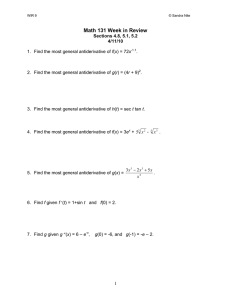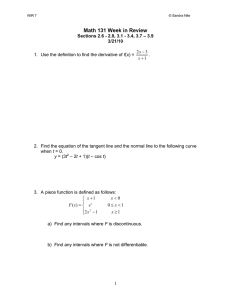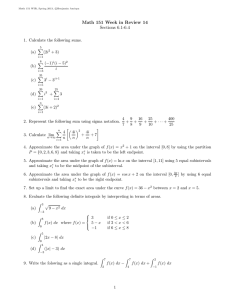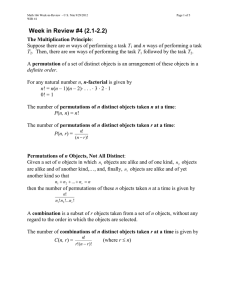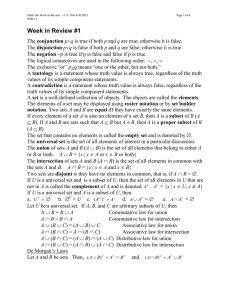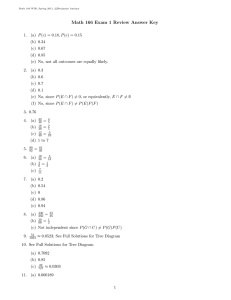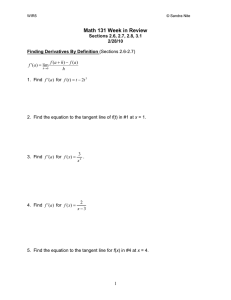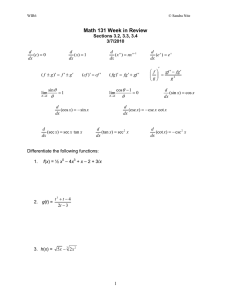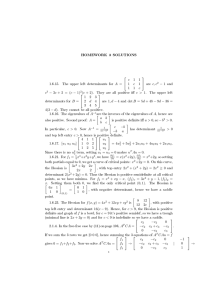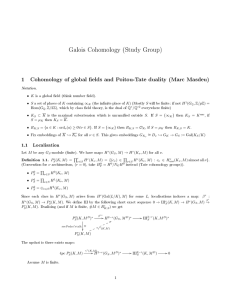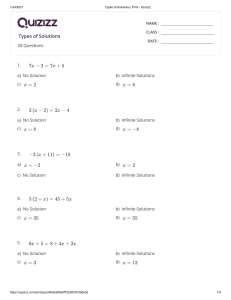Math 131 Week in Review < +
advertisement
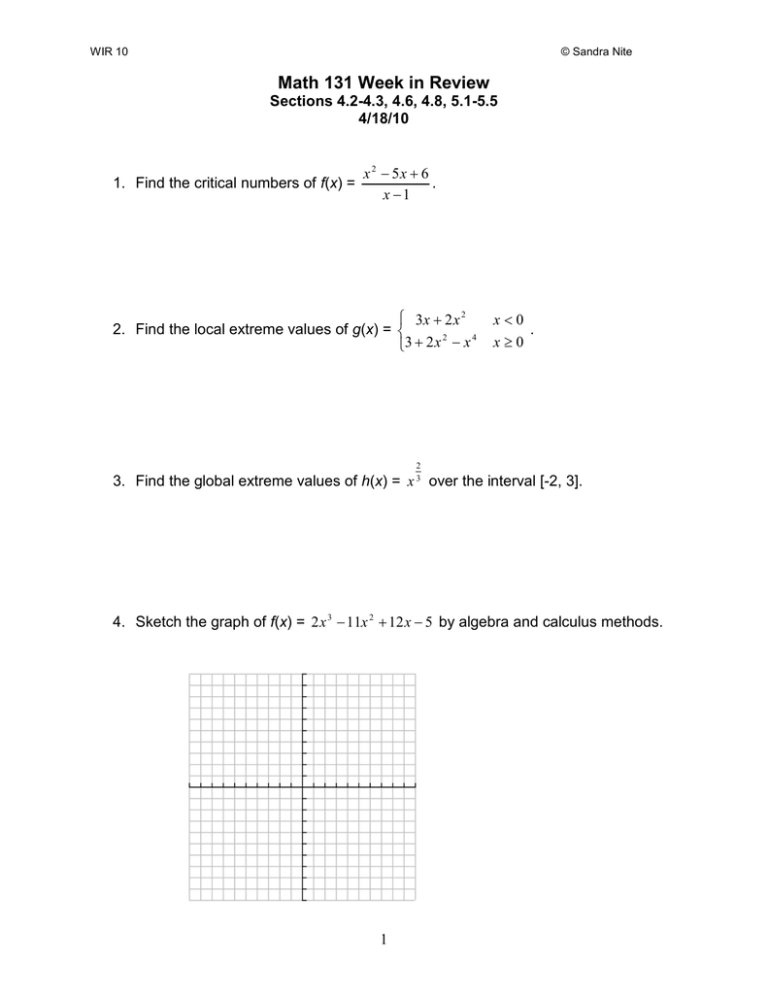
WIR 10 © Sandra Nite Math 131 Week in Review Sections 4.2-4.3, 4.6, 4.8, 5.1-5.5 4/18/10 1. Find the critical numbers of f(x) = x 2 − 5x + 6 . x −1 3x + 2 x 2 2. Find the local extreme values of g(x) = 2 4 3 + 2 x − x x<0 . x≥0 2 3. Find the global extreme values of h(x) = x 3 over the interval [-2, 3]. 4. Sketch the graph of f(x) = 2 x 3 − 11x 2 + 12 x − 5 by algebra and calculus methods. 1 WIR 10 © Sandra Nite 5. A rectangle has its base on the x-axis and its upper two vertices on the parabola y = 12 –x2. What is the largest area the rectangle can have, and what are its dimensions? 6. The graphs of f, f ′, and f ″ are shown below. Label them appropriately. 7. Find the general antiderivative of g ( x) = 3 x 2 + 6 x − 5 + cos(2 x) . 2 WIR 10 © Sandra Nite 8. Find the net displacement from 3 to 6 seconds, given the velocity is v(t) = 4x – 7 meters per second. 9. Use left endpoints and 5 subintervals to estimate the area under the curve of y = 3x2 – 4 over the interval [-2, 3]. 10. Find the displacement and the distance traveled of a particle over the interval [1, 4], given v(t) = t – 2. 3 WIR 10 © Sandra Nite 11. Let g(x) = ∫ x 0 f (t ) dt where f is the function whose graph is shown. a) Estimate g(-2), g(-1), g(0), g(1), g(2), and g(3). b) Where does g have a maximum value? Where does it have a minimum value? c) Sketch the graph of g. 12. Evaluate: a) ∫ c) ∫ 1 −2 (5e 2x 3x 2 b) ∫ 3 dx 0 x +3 4 − 3) dx e x dx d) ∫ 0 3 + ex 2 2 x cos(2 x ) dx 4
